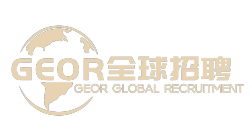Under the wave of globalization, how can enterprises efficiently deploy overseas talent recruitment?
Under the wave of globalization, how can enterprises efficiently deploy overseas talent recruitment?
With the acceleration of global economic integration, more and more companies are looking to overseas markets for business expansion and innovation breakthroughs. In this process, overseas talent recruitment has become a key link for enterprises to realize their globalization strategy. However, cross-border recruitment involves multiple challenges such as cultural differences, laws and regulations, and talent matching. How to efficiently attract and retain high-quality overseas talents has become an urgent problem for enterprises to solve.
Cross-cultural communication: the first step to breaking down recruitment barriers
One of the core challenges of overseas recruitment is cultural differences. There are significant differences in work habits, communication styles, and professional values in different countries. For example, the European and American markets pay more attention to personal ability and career development, while parts of Asia pay more attention to teamwork and stability. Companies need to fully understand the cultural characteristics of the target market and adjust their recruitment strategies when recruiting. For example, avoid using words that may cause misunderstandings in the job description, and design cross-cultural adaptability assessments during the interview process to ensure that candidates can integrate corporate values and adapt to a multicultural environment.
localization strategy: accurately reach the target talent
overseas recruitment is not a simple copy of the domestic model, but needs to formulate targeted strategies according to the characteristics of the local market. Enterprises can improve recruitment efficiency through the following ways:
- cooperation with local recruitment platform : the mainstream recruitment channels in different countries are significantly different, for example, LinkedIn dominates the European and American markets, while some Asian countries rely more on local recruitment websites or social media. Selecting a platform that matches the target market can greatly increase exposure.
- participate in industry activities : through overseas industry exhibitions, academic forums or online seminars, you can directly contact the target talents and demonstrate the strength of the enterprise and the employer brand.
- establish a localized employer brand : display the international image of the enterprise through recruitment official website, social media and other channels, highlight multicultural inclusiveness, career development opportunities and employee benefits, and attract the attention of potential candidates.
Compliance and risk management: ensuring the legitimacy of the recruitment process
Cross-border recruitment involves complex laws and regulations, including visa policies, labor laws, and data privacy protection. Companies need to understand the legal requirements of the target country in advance to avoid hiring disruptions or legal risks due to irregularities. For example, some countries have strict quota restrictions on the work visa of overseas employees, and enterprises need to plan and prepare relevant materials in advance; when processing candidate data, they need to comply with privacy protection regulations such as GDPR to ensure compliance with information collection and use.
Technical Empowerment: Enhancing Recruitment Efficiency and Experience
The application of digital tools can significantly optimize the overseas recruitment process. For example, through the AI interview system to achieve multi-language automatic screening, reduce labor costs, the use of big data to analyze the background of candidates and job matching, improve decision-making efficiency, through video conferencing tools to achieve remote interviews, breaking geographical restrictions. In addition, establish a candidate relationship management system (CRM) to continuously follow up potential talents and enhance the attractiveness of the employer brand.
Long-term talent management: building a global team
Recruitment is only the first step, and retaining overseas talent is equally important. Enterprises need to provide overseas employees with clear career development path, cross-cultural training and local welfare support. For example, the establishment of international rotation mechanism to help employees accumulate diversified experience; provide language training and cultural adaptation courses to reduce the difficulty of integration; adjust the salary and welfare system according to the local market to ensure competitiveness.
Under the global competition, overseas talent recruitment has become the key to enhance the core competitiveness of enterprises. Through cross-cultural communication, localization strategy, compliance management, technology empowerment and long-term talent management, enterprises can effectively build global teams and provide continuous motivation for business development. In the future, with the popularization of telecommuting and digital technology, the boundary of overseas recruitment will be further expanded. Enterprises need to maintain keen insight and flexibly adjust strategies in order to take the lead in the global market.
